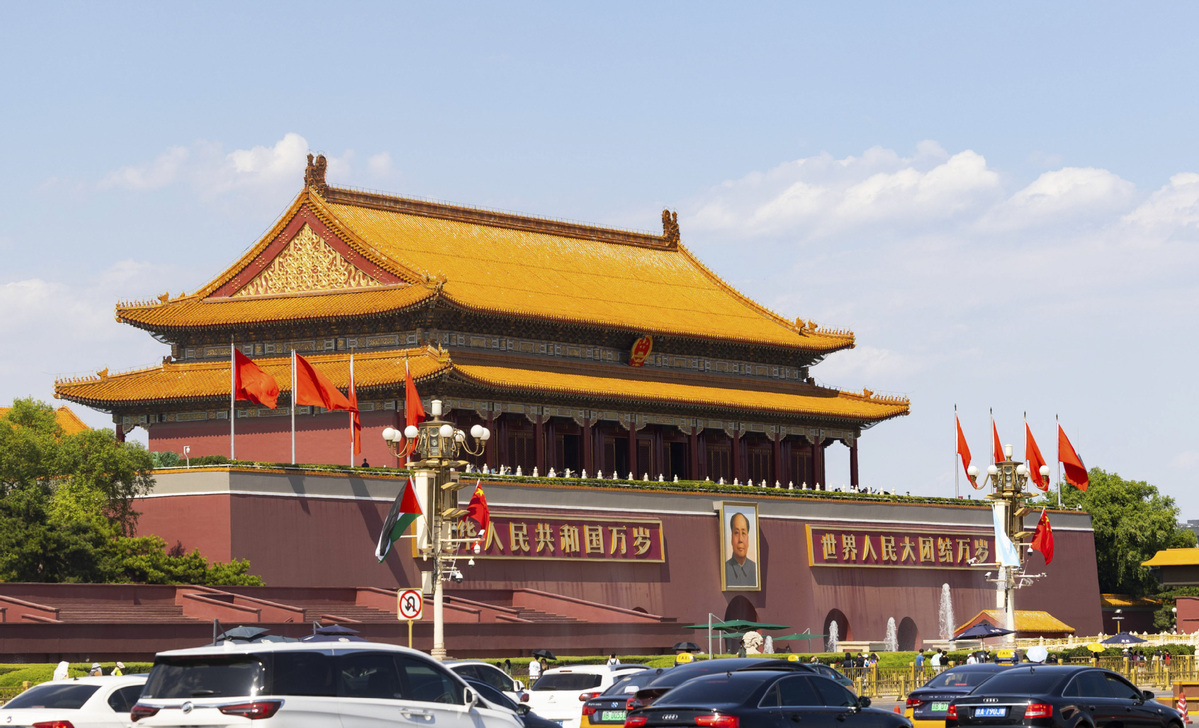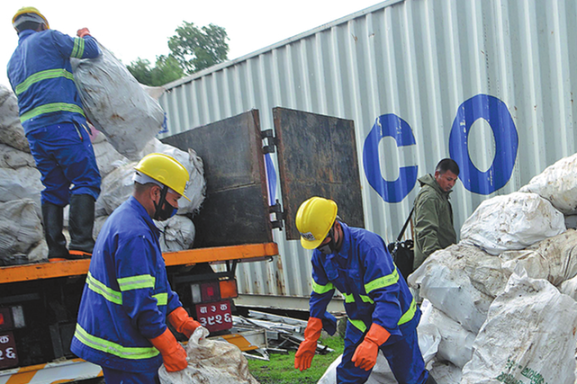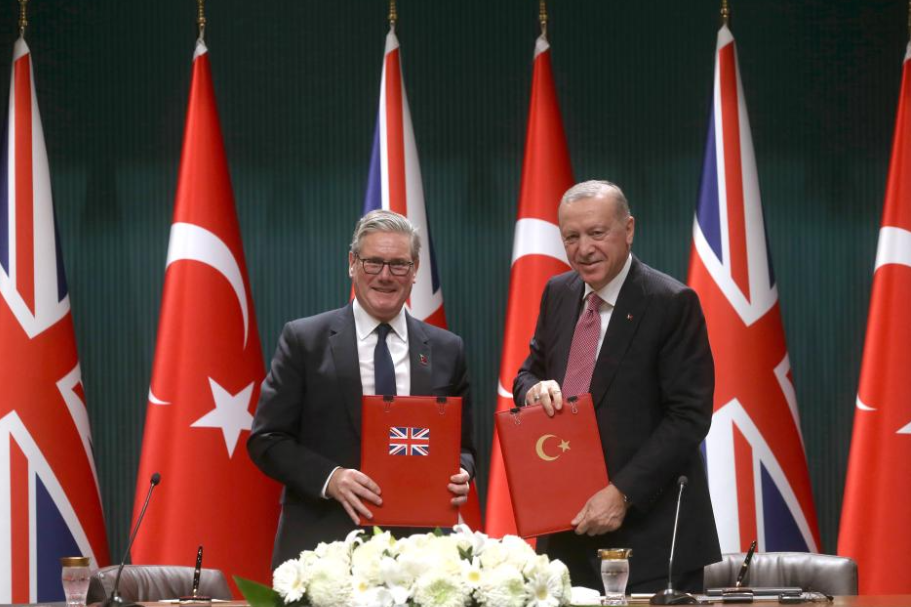Myth of 'peak China' is wide of the mark


There is a popular Western perception that China's continuous rise is no longer "unstoppable", due to markedly slower growth rates, rapidly aging demographics, semiconductor bottlenecks, allegedly more constrained innovative capacity, feeble productivity increases and more hostile external geopolitics.
An article in The Economist on May 11 asked, "Is Chinese power about to peak?" — highlighting Goldman Sachs' much lowered expectation of China's economy overtaking the United States by 2035, as well as the gloomier forecast by Capital Economics, a research firm, that China may never be able to overtake the US economy, instead peaking at 90 percent of the size of the US economy by 2035. As China has four times the population of the US, this pessimism presupposes that China's per capita productivity will never exceed one-fourth that of the US.
The Economist flagged up, without agreeing, the alarmist warning of Hal Brands and Michael Beckley that a "peak China" that is "facing decay" may well go to war to unify with Taiwan preemptively, before it is too late, regardless of three white papers reaffirming Beijing's preference for peaceful unification.
Drama aside, these "peak China" musings are wide of the mark.
It's only natural that much larger and more mature economies beget more moderate growth rates. Just look at the advanced Western economies including the US.
After decades of breakneck GDP growth that was once described as "unstable, unbalanced, uncoordinated and unsustainable", China has instead been pursuing higher-quality, socially equitable and ecologically sustainable growth.
With an imperative for "common prosperity", China's people-based governance is geared toward realizing the well-being of the 99 percent, instead of the 1 percent elite as in some advanced countries.
Worsening demographics are a real challenge. However, about one-third of the 150 million Chinese people age 60 to 69 continue to work, as China's life expectancy has vastly improved.
Relaxing China's mandatory retirement age is already on the cards, as are greater financial incentives, childcare facilities and other child-raising and educational benefits.
Instead of labor intensity, China's productivity is increasingly being driven by factory robotics, extensive farming mechanization, ubiquitous digitalization, and national high-speed-rail connectivity. Becoming commonplace are drone delivery systems and staffless hotels, restaurants, stores and supermarkets that rely on digital connectivity, automation and robotics.
As for China's innovative capacity, an Australian Strategic Policy Institute report said on March 3 that China is leading in 37 of the 44 critical technologies evaluated, often producing more than five times as much high-impact research as its closest competitor, the US.
Among the categories of critical technologies, China dominates in all the subsectors in advanced materials and manufacturing; energy and environment; and photonic sensing, timing and navigation. It has a substantial lead in the categories of artificial intelligence, computing and communications; quantum computing, cryptography, communications and sensors; biotechnology, gene technology and vaccines; and defense, space, robotics and transportation.
All these technologies are at the heart of the fourth and fifth industrial revolutions, set to redefine how people live, how business is conducted, and how national powers are measured in the 21st century.
High-end nano-semiconductor chips excepted, China's technological dominance is perhaps not surprising. Since the mid-2000s, China has consistently been producing more PhDs in science, technology, engineering, and math than the US. By 2025, Chinese universities will be producing more than 77,000 such PhDs per year, compared with approximately 40,000 in the US. Excluding international students, Chinese science, technology, engineering, and math PhD graduates are expected to outnumber their US counterparts more than three to one, according to Georgetown University's Center for Security and Emerging Technology.
In the face of indiscriminate US tariffs and denial of technological access, China has proved its economic resilience as the world's largest trader and manufacturer, and it is deeply embedded in global supply and value chains, including critical rare earth elements. It's instructive that a US-led push for "de-coupling" has now been changed to "de-risking".
In the provocative book The Future is Asian, Parag Khanna argues that while the 19th century featured global "Europeanization "and the 20th century "Americanization", the 21st century is for "Asianization", a multicivilizational order spanning China, Indonesia, Japan, Turkiye, Saudi Arabia, Russia and Australia — linking 5 billion people through trade, finance, infrastructure and diplomatic networks, and representing 40 percent of global GDP.
The Regional Comprehensive Economic Partnership, which comprises members of the Association of Southeast Asian Nations and their main trading partners, including China, Japan, South Korea and Australia, is now the world's largest and most dynamic trading group, representing one-third of the world's population, one-third of the world economy and a vast number of the world's middle-income consumers. As the world's most comprehensive trader and manufacturer, China is at the economic heart of the RCEP.
Weaponizing the dollar to impose sanctions across the globe has now boomeranged, as expounded in Backfire: How Sanctions Reshape the World Against US Interests, by Agathe Demarais.
There is now a strong "de-dollarization" undercurrent among various developing country groupings such as BRICS (Brazil, Russia, India, China and South Africa) and the Shanghai Cooperation Organization, not to mention China's rapidly developing digital yuan as an alternative sovereign currency for international trade.
By 2035, the developing world will account for around 60 percent of the global economy, based on purchasing power parity, according to the Conference Board Global Economic Outlook. Most developing nations have China as their largest trading partner, and many are moving in its orbit.
Following the end of the prolonged COVID-19 pandemic, foreign businesses and investors across the globe are beginning to make a beeline for China.
China is actively preparing for domestic reforms, having applied to join the Comprehensive and Progressive Agreement for Trans-Pacific Partnership, mandating higher international standards.
Perhaps where the so-called "peak China" mantra seems most wrong-footed is its assumption that China wants to surpass and supplant the US as world hegemon. President Xi Jinping has repeatedly stressed that striving to be a "strong, democratic, civilized, harmonious and modern socialist country" doesn't translate into seeking world hegemony.
Initial Western suspicion notwithstanding, China's Global Security Initiative seeks to promote dialogue over confrontation, partnership over ganging-up alliance, and win-win coexistence over a winner-take-all, zero-sum conflict. Its Global Development Initiative is intended to remedy the developing world's lack of infrastructural connectivity, bringing better lives to their peoples and fulfilling the United Nations' Sustainable Development Goals. Both initiatives are designed to redress the root causes restraining the development of a more equitable, peaceful and prosperous world.
The author, an international, independent China strategist, was previously the Hong Kong Special Administrative Region's director-general of social welfare and the SAR's official chief representative for the United Kingdom, Eastern Europe, Russia, Norway and Switzerland.





























